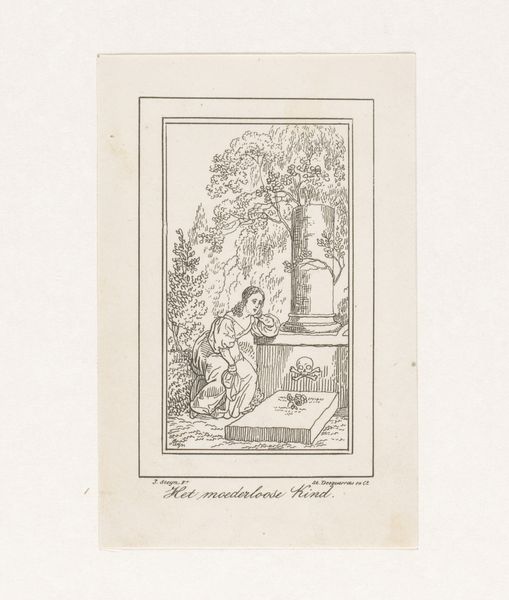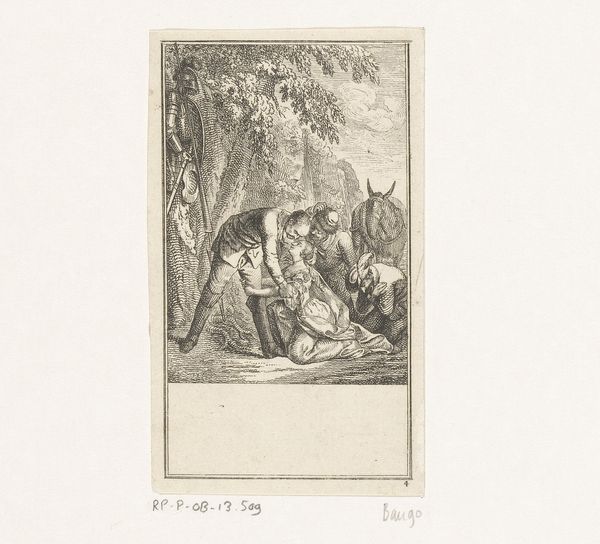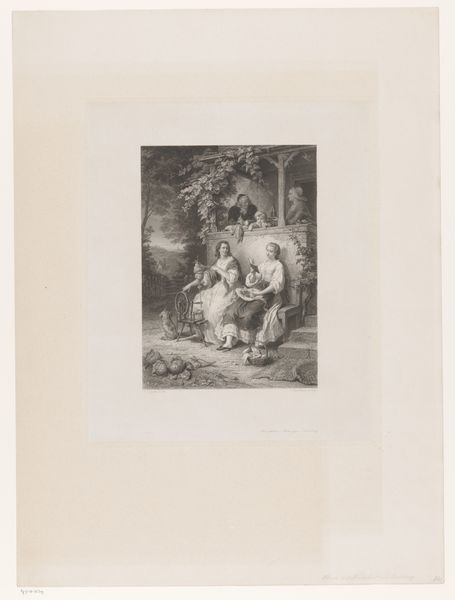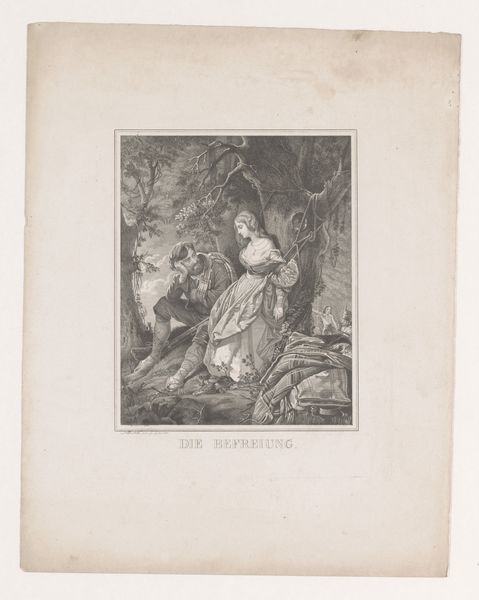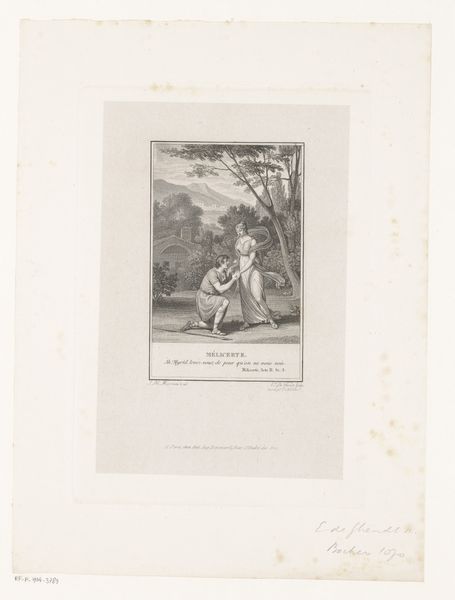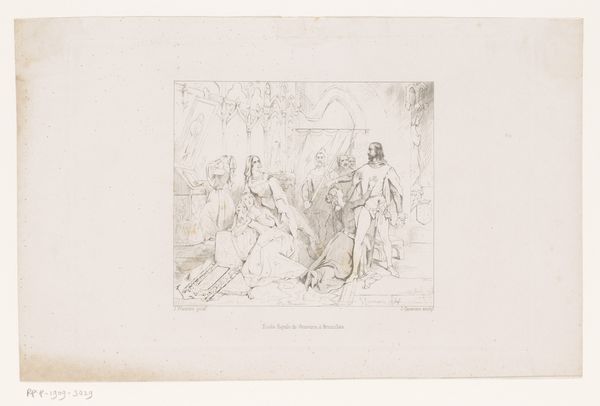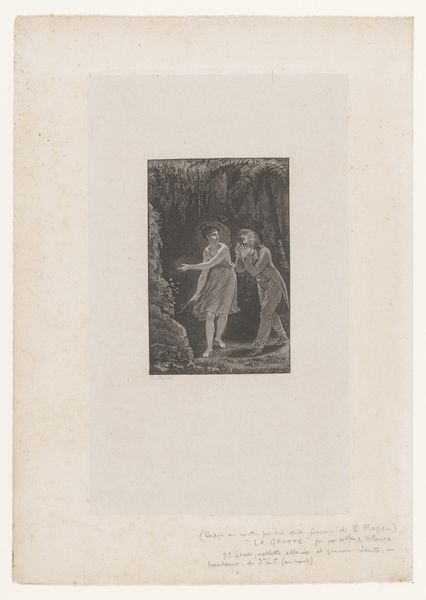
print, paper, engraving
# print
#
landscape
#
waterfall
#
figuration
#
paper
#
romanticism
#
genre-painting
#
engraving
Dimensions: height 119 mm, width 75 mm
Copyright: Rijks Museum: Open Domain
Curator: Before us is "Mannen bij waterval," or "Men at Waterfall," an engraving by Johannes Steyn from 1836. It resides here at the Rijksmuseum. Editor: It's striking how neat and orderly it all is. Even the wild waterfall feels contained by the precision of the lines. Almost too… pleasant? Curator: Precisely. Note how Steyn utilizes the medium of engraving. The meticulous lines delineate form, but more importantly, they construct a sense of order, typical of the Romantic landscapes of the period. Observe how the composition is essentially a framed view, a stage for observing nature. Editor: And what’s on that stage? Three figures, elegantly dressed, witnessing the sublime. Top hats and all. It's not just about seeing nature, it's about seeing themselves seeing nature, isn't it? It echoes the myth of the “wanderer” of that time, as a symbol of melancholic contemplation. Curator: Exactly! Consider the symbolism of the waterfall itself. It is a powerful force, yet rendered here with a delicate hand. It mirrors the era's fascination with taming the sublime. The waterfall acts as an ambivalent symbol of Romanticism; uncontrolled and untamed but safely viewed through a sort of objective lens. Editor: Right. So, is it truly celebrating raw nature, or more about the cultivated experience of it? Those gentlemen certainly don't look like they're roughing it! The landscape itself takes on new meanings—as a curated symbol of status and emotional depth. It's a signifier as much as a landscape. Curator: I would also say the use of line and framing serves to distance us, to emphasize that this experience, the sublime of nature, is something observed and contemplated, not necessarily felt viscerally. The controlled medium of the print allows only for certain aspects to bleed through. Editor: I am ultimately struck by how this image really exposes that tension, doesn't it? It's not just about the natural world; it's about our relationship to it. A fascinating snapshot into how they were crafting their own sense of place in the world and in nature at this historical juncture. Curator: Indeed. An exercise in constructing a specific gaze.
Comments
No comments
Be the first to comment and join the conversation on the ultimate creative platform.

